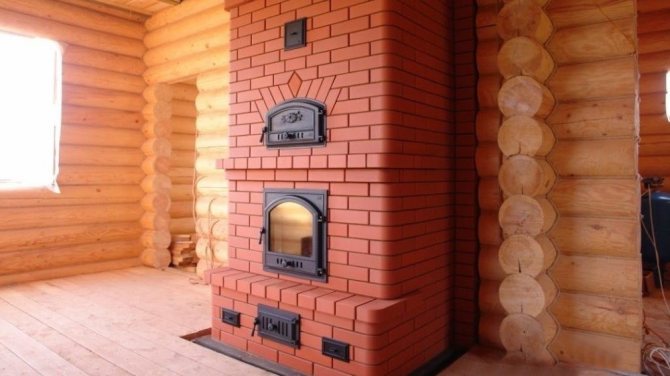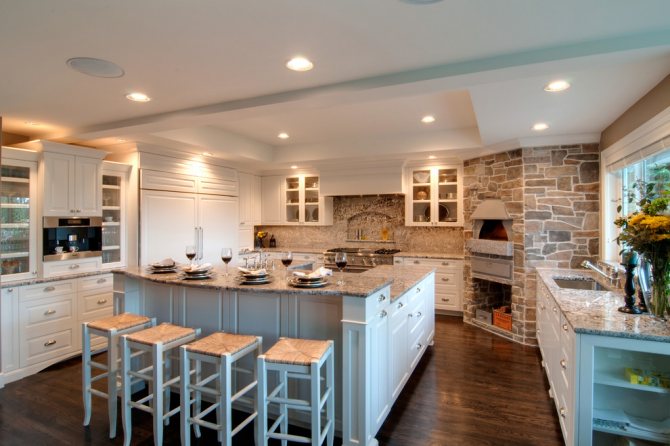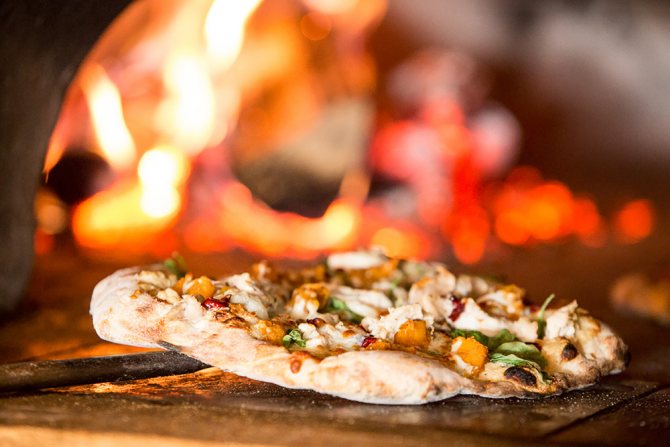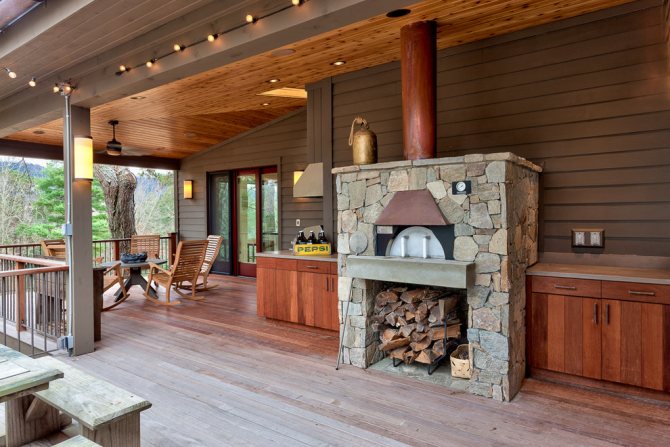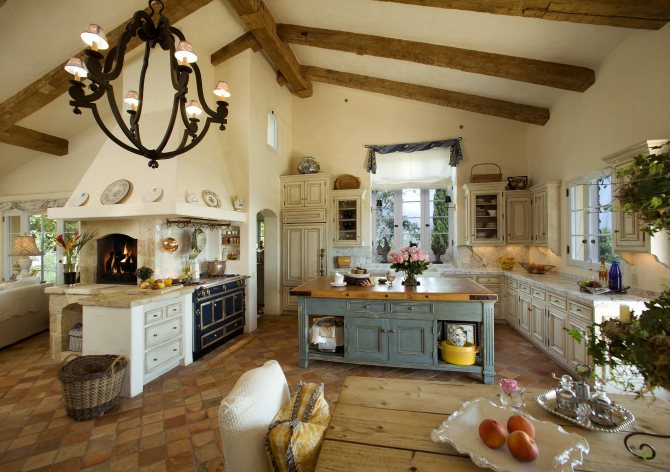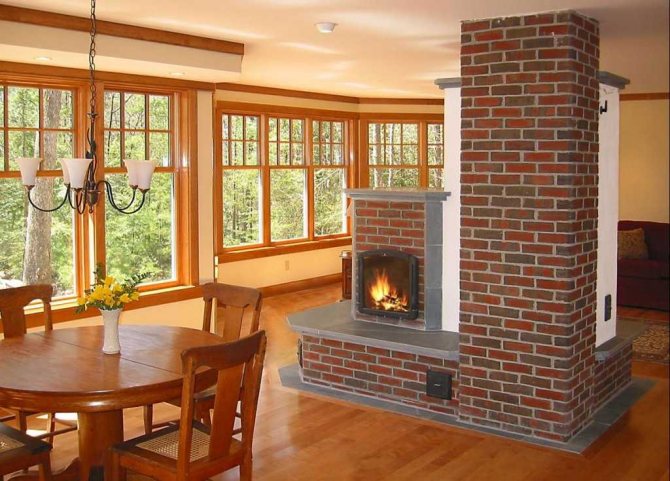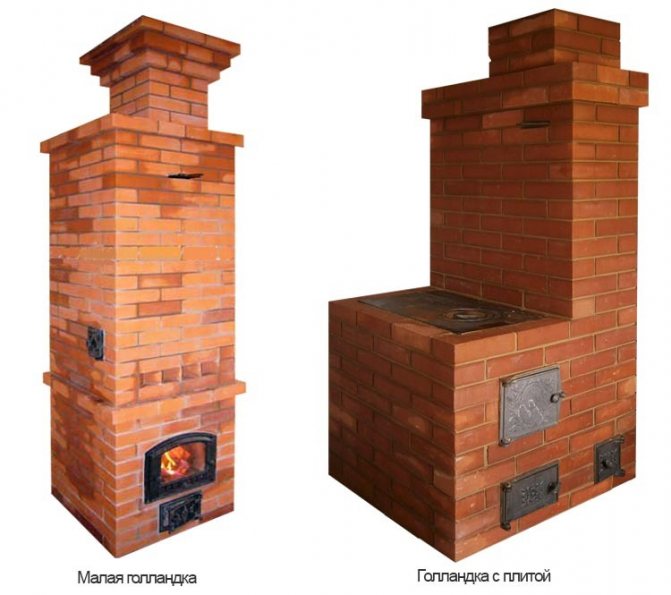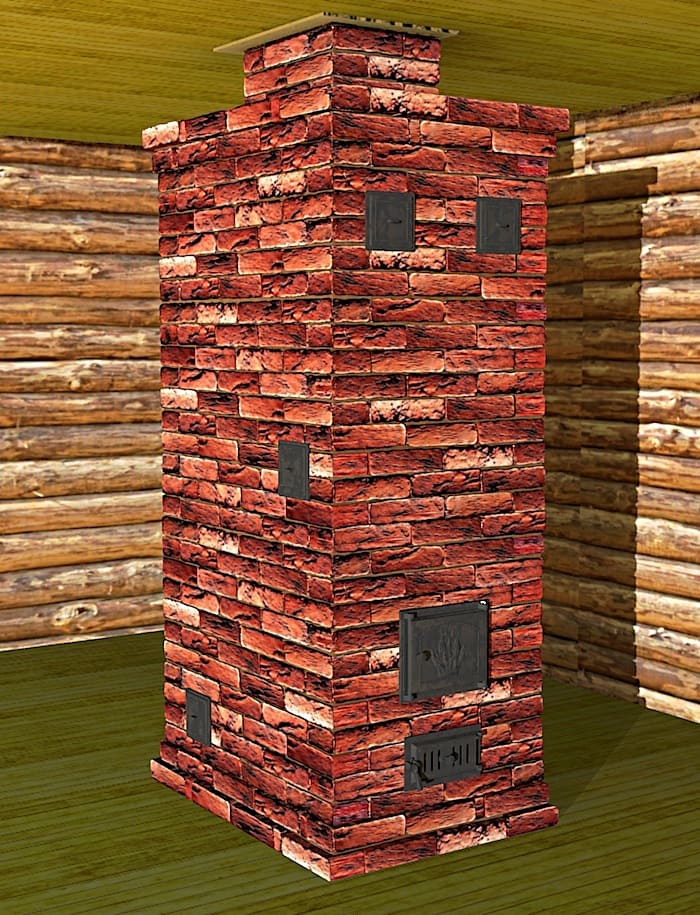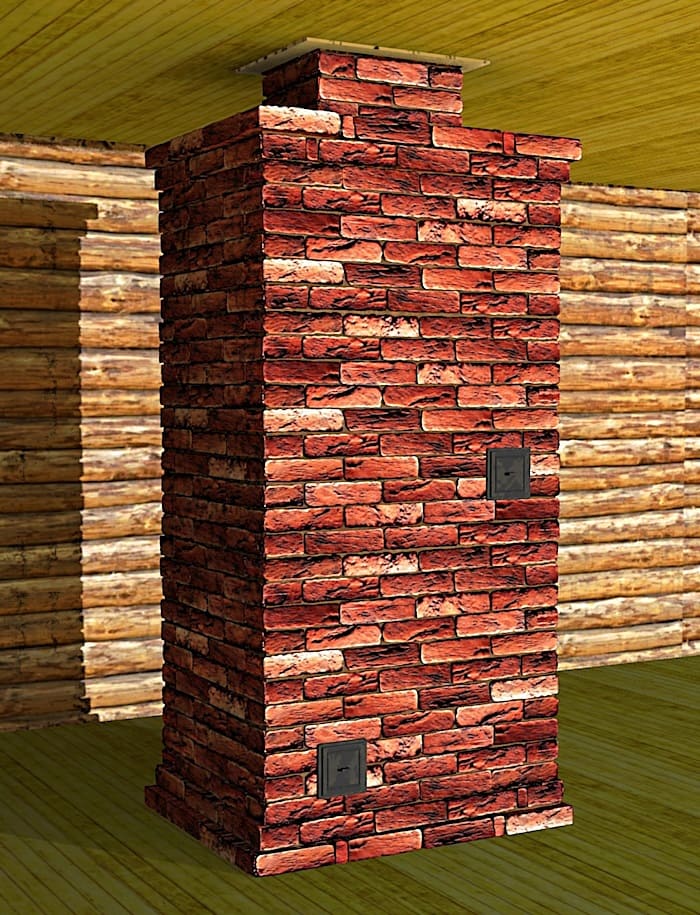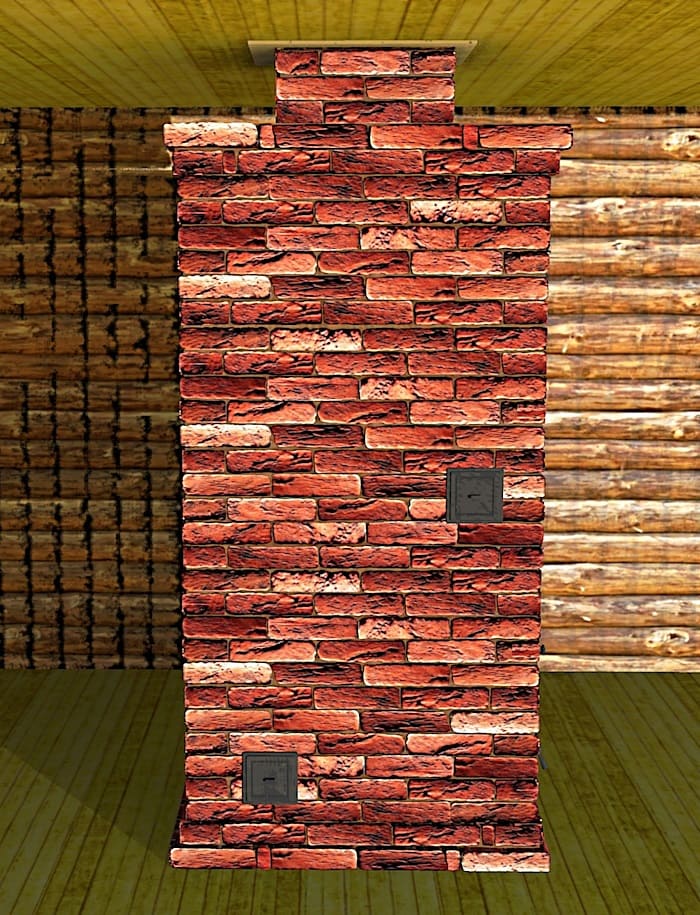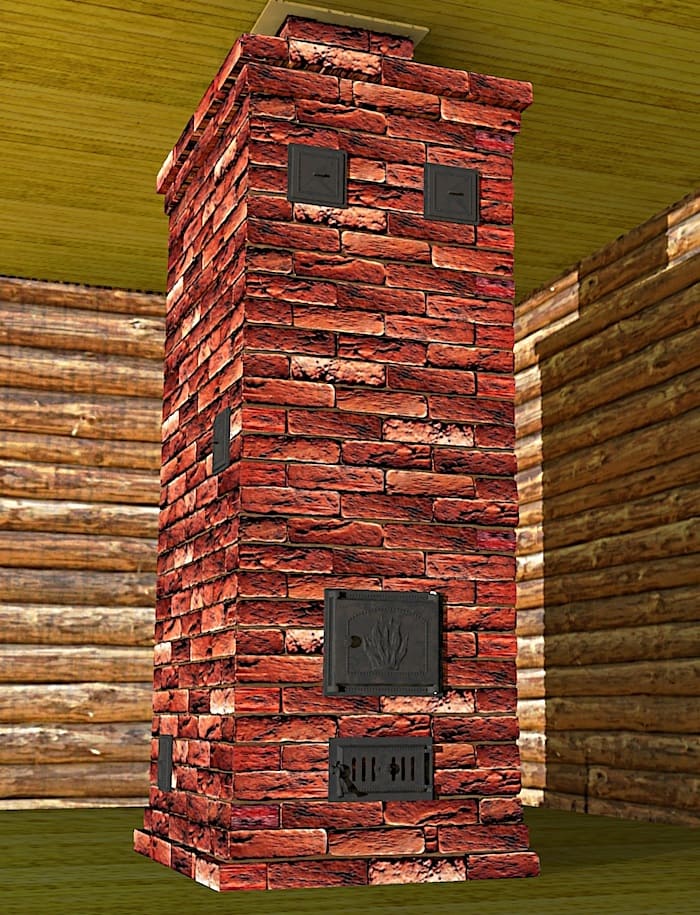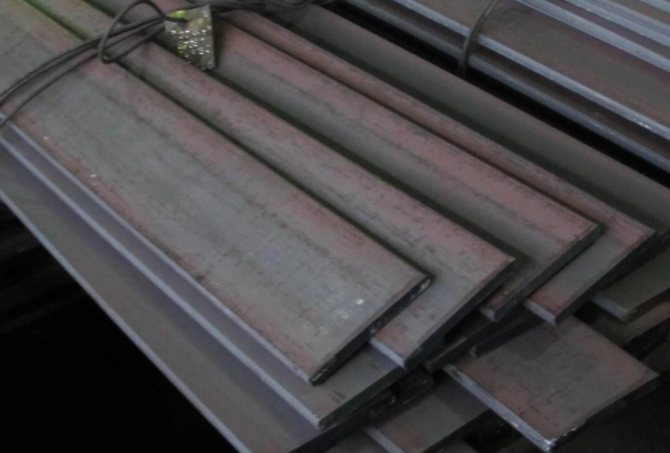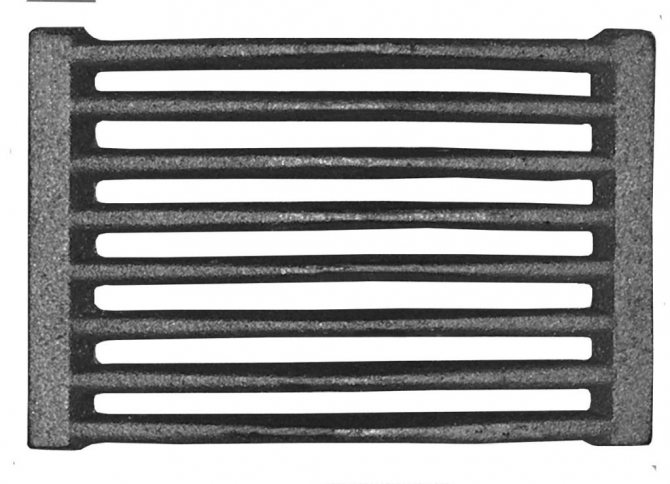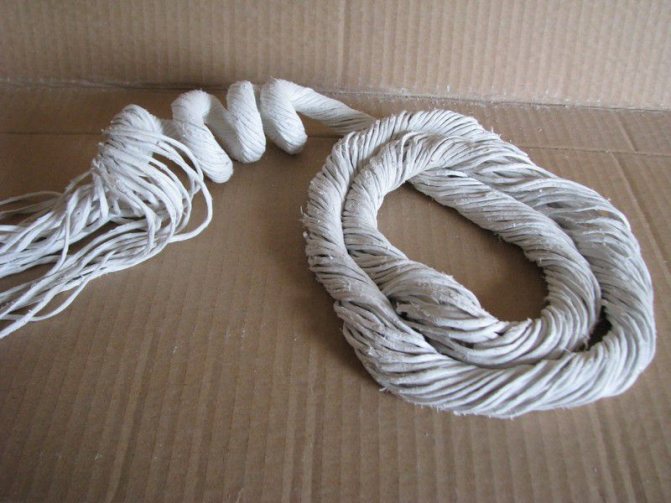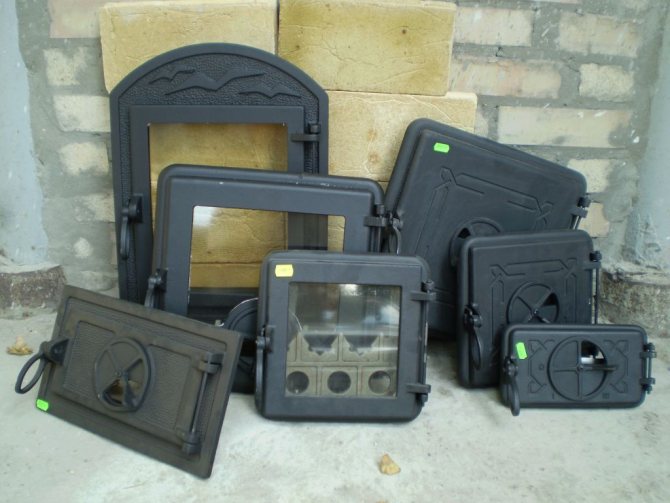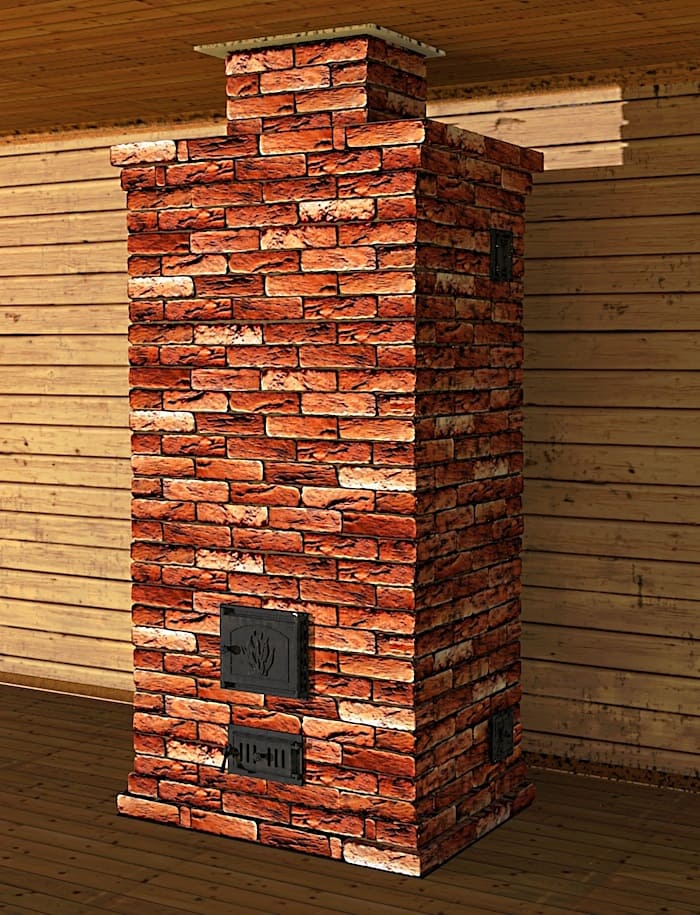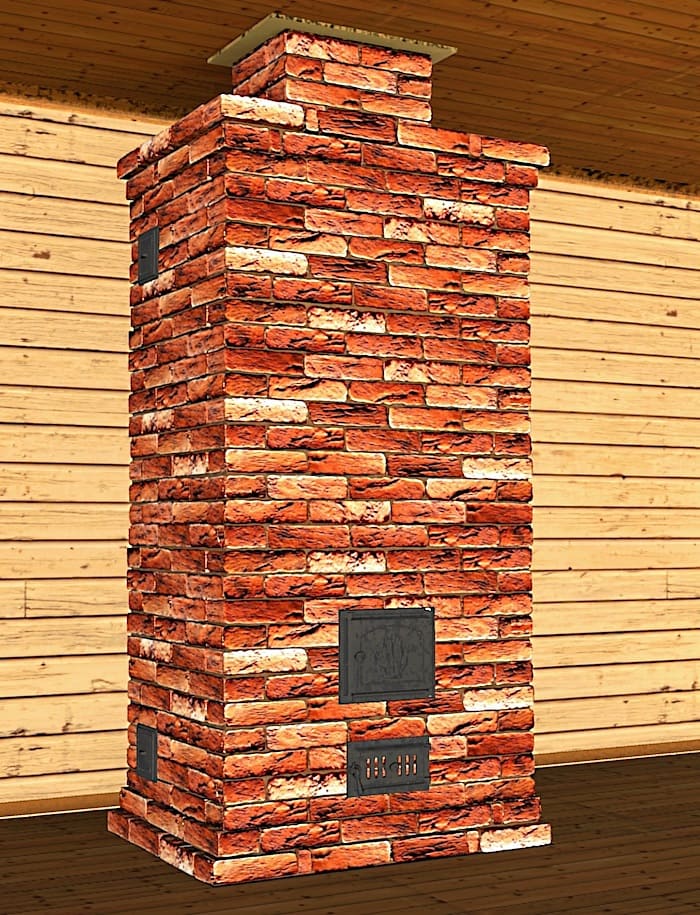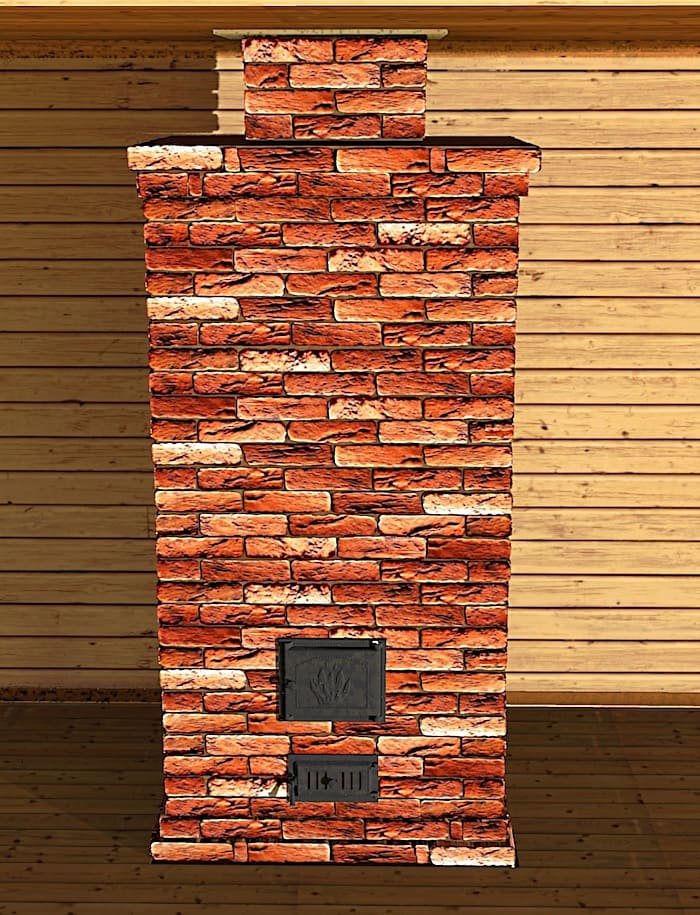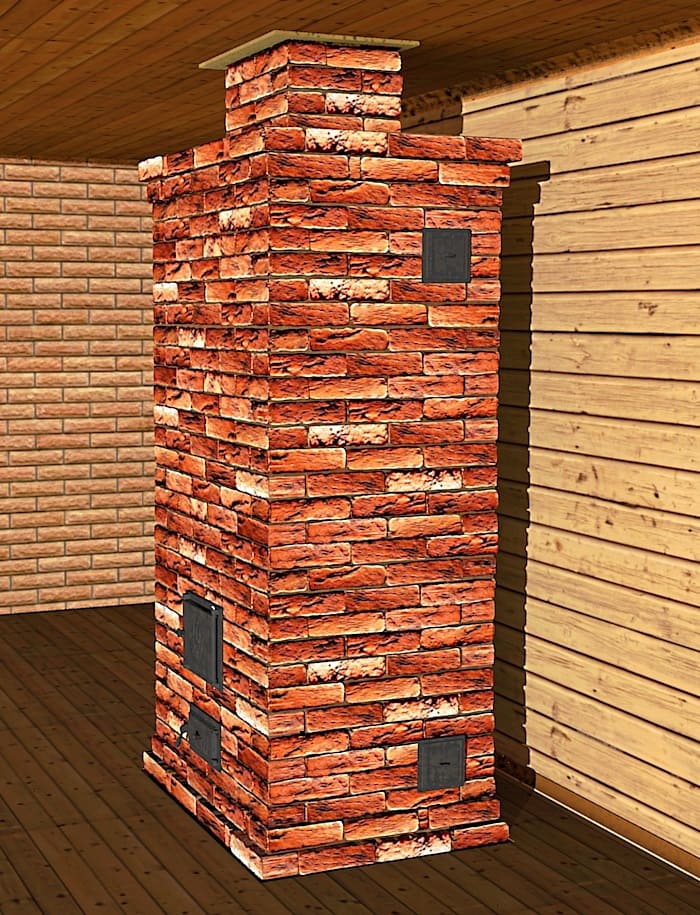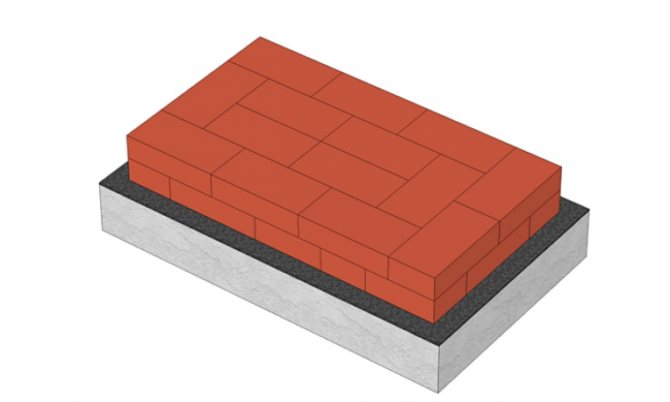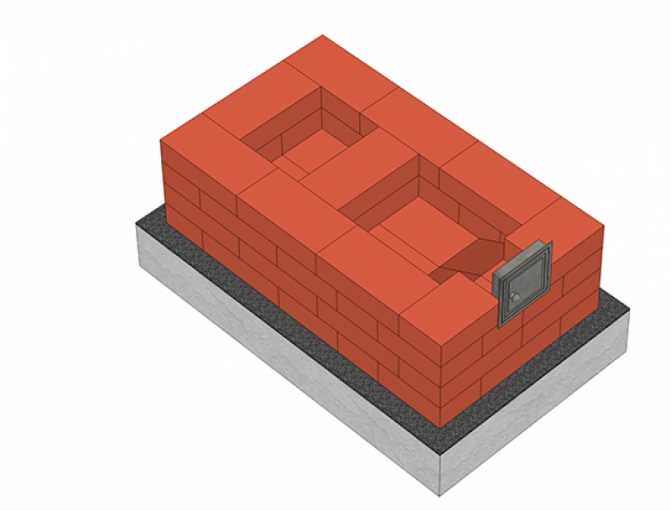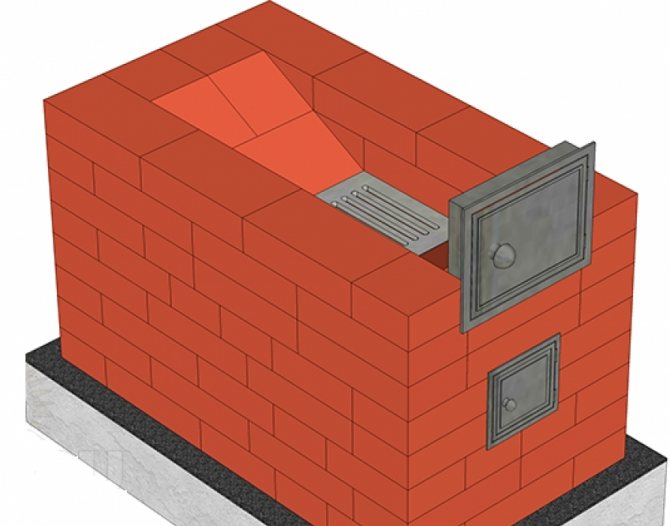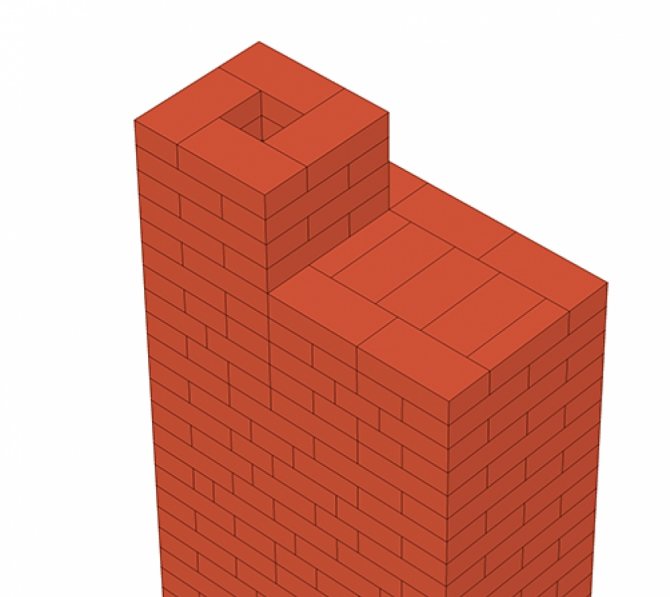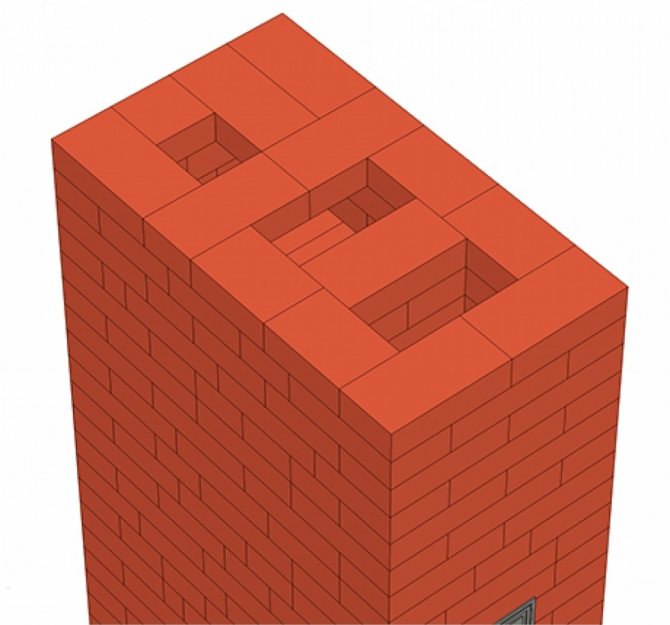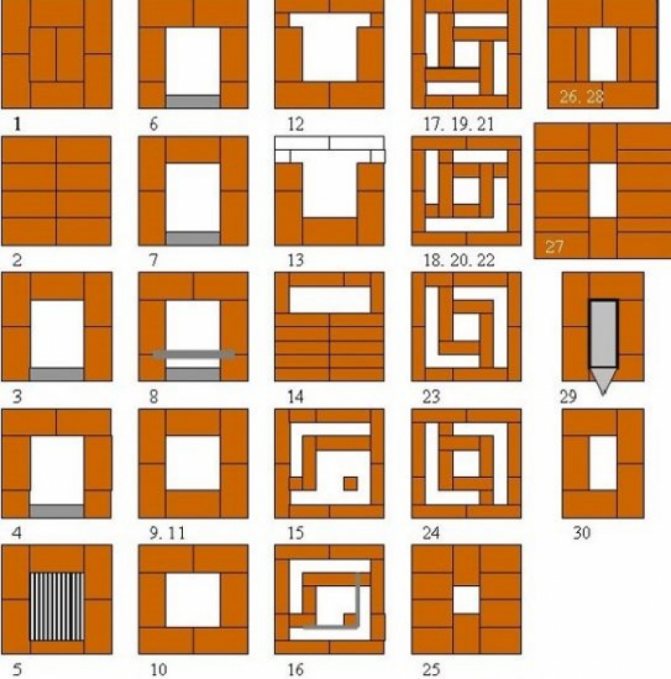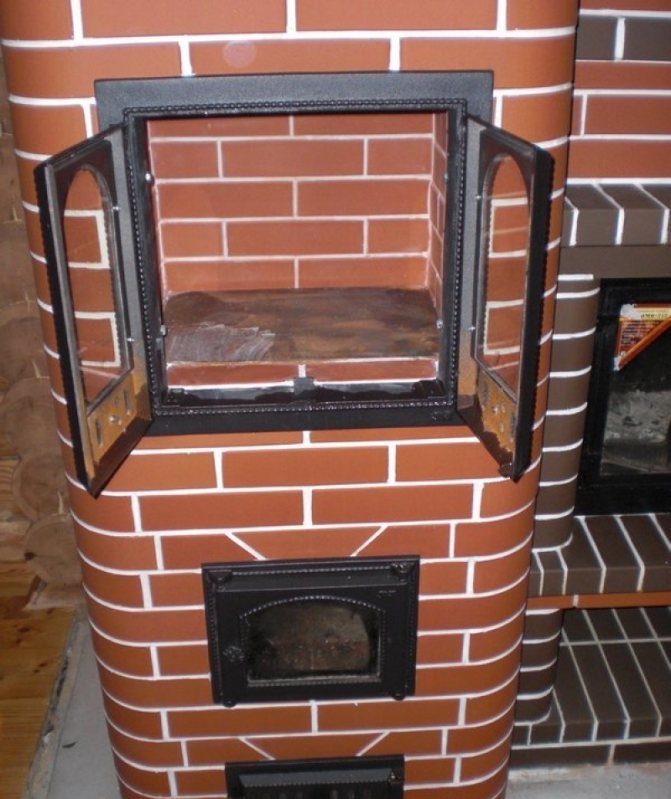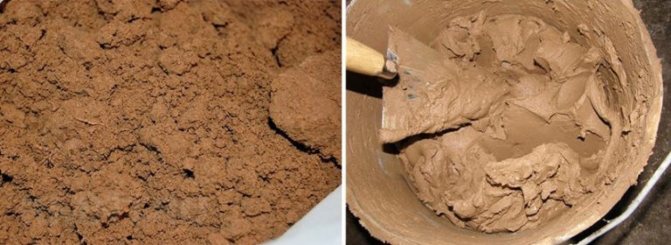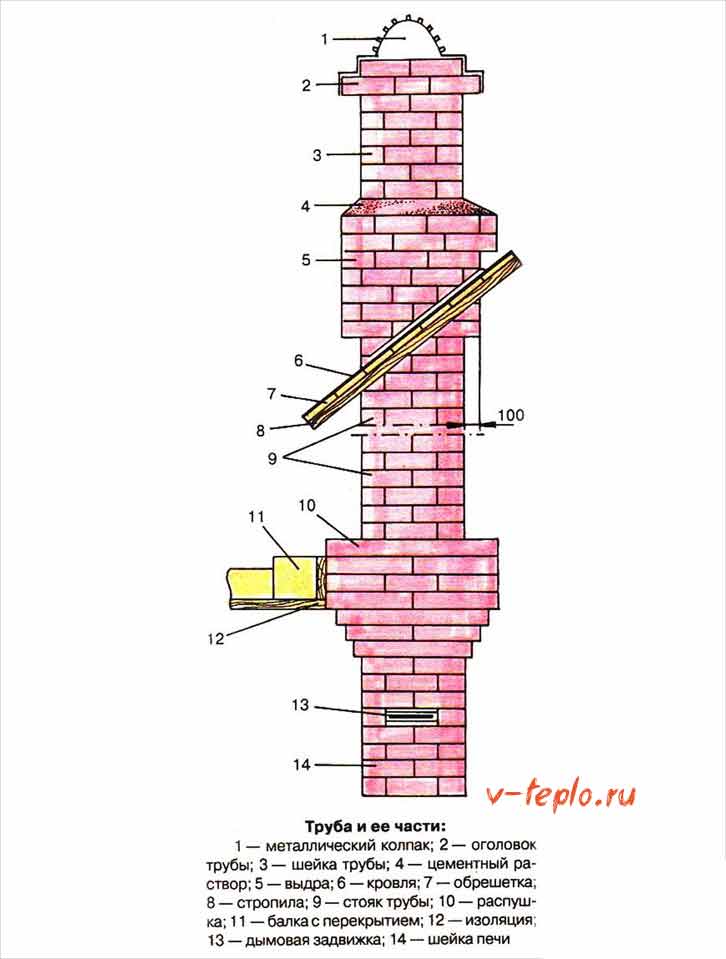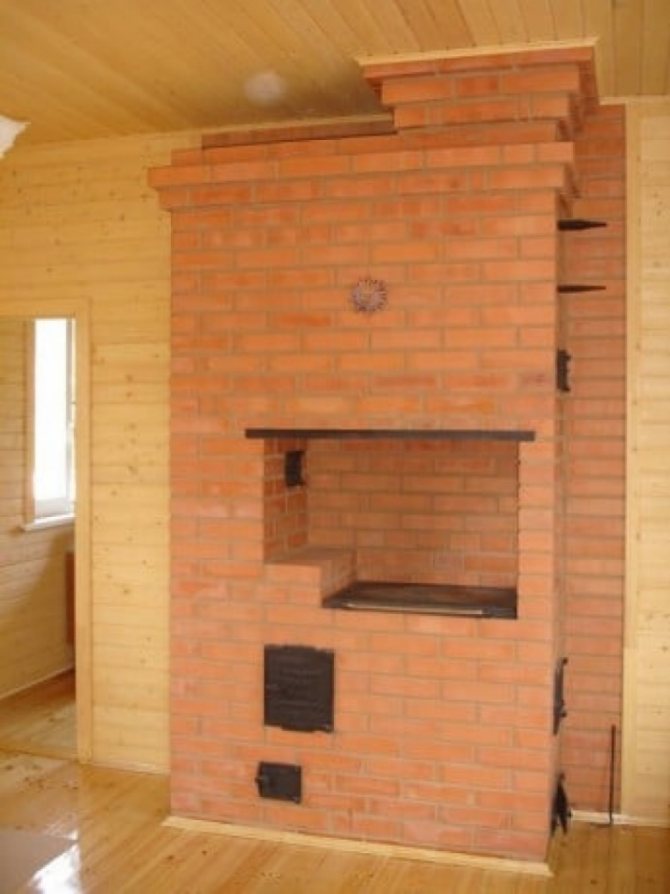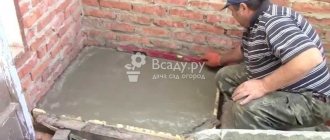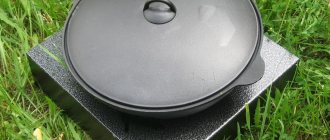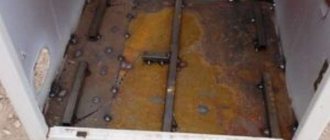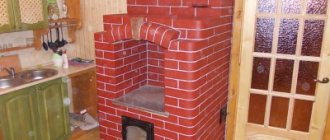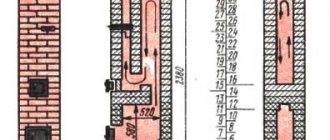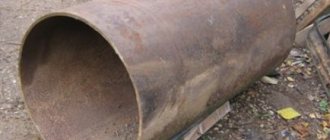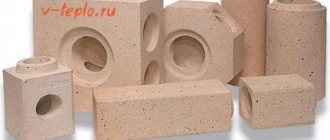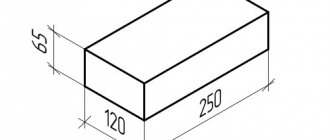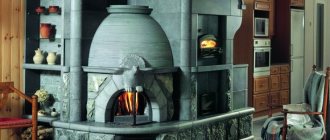Dutch heating method
The brick oven is Dutch. Often, the stove is used to heat a private house in the suburbs or in rural areas where other heating methods cannot be applied. Heating a house in this way in most cases is considered the most suitable option for heating a country house, both when people are constantly in the room, and during the period of rare visits. Hot air is considered to be a heat carrier for this heating method. Almost all of these stoves heat the house with their own walls, there are projects where air flows along the walls from the inside, in the process of its movement it becomes hot and comes out. And if the air heats up only from the surface of the hearth, then the area of the heat generator should be enough to warm up the room.
Basics of creation
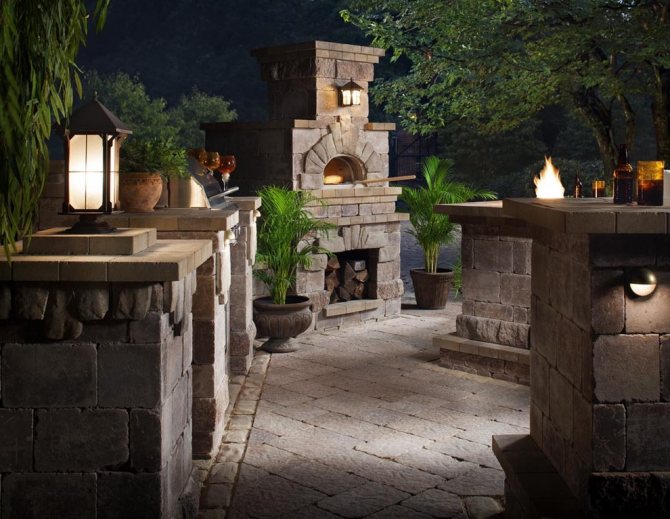
The Dutch oven is very often located in the recreation area for cooking.
Like most folk inventions, a Dutch woman can be built with her own hands. This won't be a problem if you consider a few really important details.
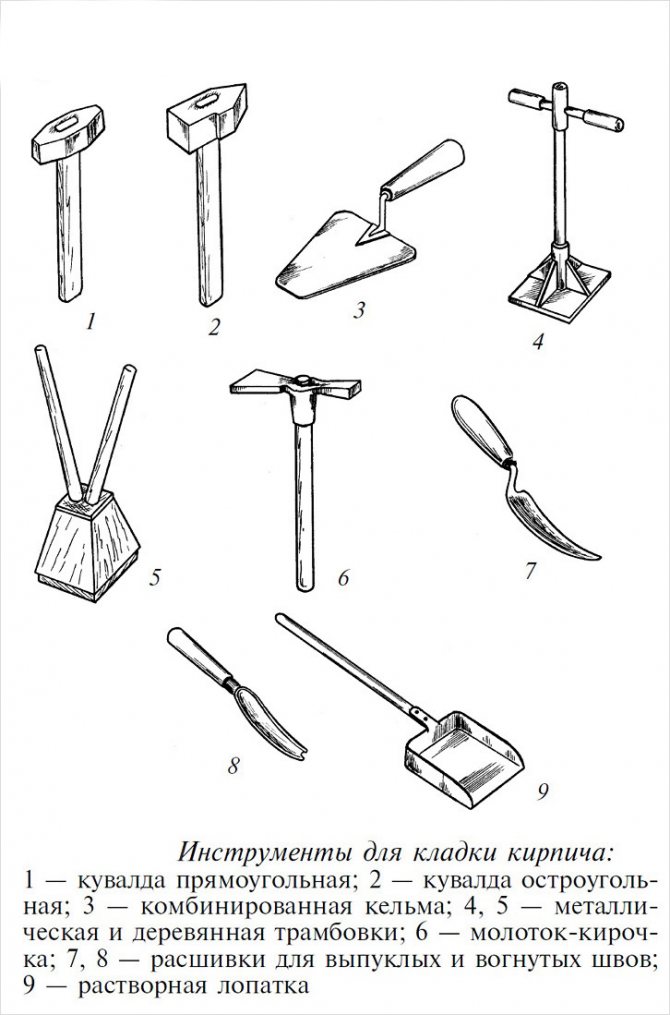

Bricklaying tools
Unlike some oven options, Dutch women require their own foundation. It is desirable to form it even at the stage of building a house. If it is not there, you will have to disassemble part of the floor, create a pillow of sand or rubble and build a separate foundation. It must have reinforcement in order to withstand, albeit small, but still weight. Therefore, it is also important that this foundation be monolithic. It does not have to be made of brick, but when its height is almost equal to the floor level, you will need to create a bed of sand from above.
Its thickness can fluctuate in the range of 3-5 centimeters. Bituminous insulation must be placed under the backfill. It can also be roofing material and several layers of glassine. They are necessary in order to protect the stove from waterlogging during the period when it is not heated.
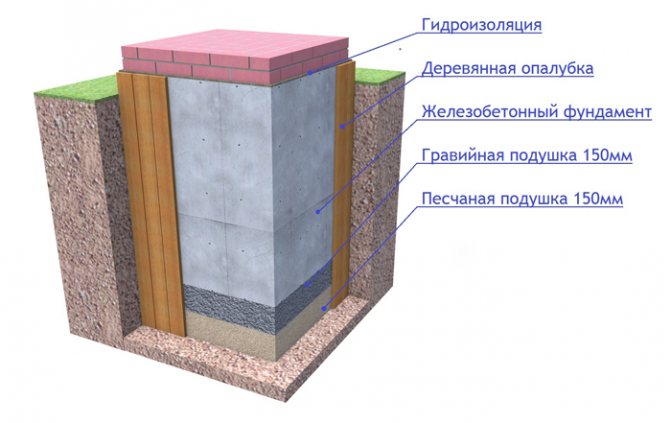

One of the options for the foundation of the Dutch oven


At the next stage, the structure will begin to acquire the first rows of real masonry. The Dutch stove, the order of which will be done according to all the rules, will precisely heat the home, and not just carry the heat out through the pipe to the street. Therefore, it is required that the scheme for the Dutch oven is prepared in advance, and not created during the laying of bricks.
Dutch oven projects
Dutch oven 002
This design of the stove is characterized by high efficiency. The main function of the Dutch oven is heating. This heating stove is made of solid ceramic bricks. Its design consists of: Firebox, chimney system, regulation of the speed of the emitted smoke. With its small size, this stove simply fits into the design of any room.
OP-Dutch 003
The classic version of the Dutch stove is a rectangular structure lined with one brick, which has long smoke channels above the firebox. The main purpose of the Dutch oven is exclusively the heating function. This design of the stove is characterized by high efficiency. The main function of the Dutch oven is heating
Dutch oven 004
The main purpose of the Dutch oven is exclusively the heating function. This design of the stove is characterized by high efficiency. The main function of the Dutch oven is heating.This heating stove is made of solid ceramic bricks. Its design consists of: a firebox, a chimney system, regulation of the speed of the emitted smoke. With its small size, this stove simply fits into the design of any room.
Dutch oven 005
Designed for premises ranging from 20 to 40 square meters. The classic version of the Dutch stove is a rectangular structure lined with one brick, which has long smoke channels above the firebox. The main purpose of the Dutch oven is exclusively the heating function.
Home Dutch 006
Designed for premises ranging from 30 to 60 square meters. The classic version of the Dutch stove is a rectangular structure lined with one brick, which has long smoke channels above the firebox. The main purpose of the Dutch oven is exclusively the heating function. This design of the stove is characterized by high efficiency. The main function of the Dutch oven is heating. This heating stove is made of solid ceramic bricks. With its small size, this stove simply fits into the design of any room.
Heating Holland 007
The main purpose of the stove is exclusively the heating function. This design of the stove is characterized by high efficiency. The main function of the oven is heating. This heating stove is made of solid ceramic bricks. Its design consists of a firebox, a chimney system, and a speed control of the emitted smoke. With its small size, this stove simply fits into the design of any room.
Dutch oven 008
Designed for premises ranging from 20 to 40 square meters. The classic design of such a furnace is a rectangular structure, lined with one brick, which has extended smoke channels above the firebox. The main purpose of the device is exclusively the heating function. This design is characterized by high efficiency.
Oven Dutch 009
The main purpose of this design is exclusively the heating function. Stove tests are characterized by high efficiency. This heating stove is made of solid ceramic bricks. Its design consists of: a firebox, a blower, a damper. With its small size, this stove simply fits into the design of any room.
Heating furnace dutch 010
Small construction for premises ranging from 18 to 24 sq.m.
The exterior is a rectangular structure, laid out in one brick, which has extended smoke channels above the firebox. It has a narrowing above the firebox. Dimensions 750x750 cm. Small in size, this stove simply fits into the design of any room.
An indisputable positive aspect of the operation of the furnaces themselves is that in this situation the heat conductor is air, which has a huge penetrating ability and a very short heating period.
Of course, heaters have been used by mankind since time immemorial and over time, certain changes have been gradually introduced into them. Absolutely all stove heating systems are subdivided into heat-intensive and non-heat-intensive. Heat-consuming storage devices are able to maintain a certain temperature for 3-12 hours. It still depends on what type of construction the heat accumulator has. As a rule, in order to increase the efficiency, water heating is connected to the stoves. This technique is becoming more common over time. In addition, it perfectly suits the design, perfectly decorating the room.
| Dutch woman (01) 4x3 bricks For heating living quarters up to 60 sq.m. Installation both interroom and island. The location of the doors on either side of the structure. It is possible to install a steam heating boiler. Designed for year-round use. |
The beginning of the story
The designs of Dutch ovens have been known since the days of Columbus. It was the 15th century outside. From the next century, when the Netherlands became independent. In the 19th century, the Dutch woman dominated the entire Old World.
With her coming into the life of a man, the latter learned about tiles and tiles. Such brick structures warm up the room soundly and work quickly in kitchens, however, being "naked", they do not fit well into the interior.
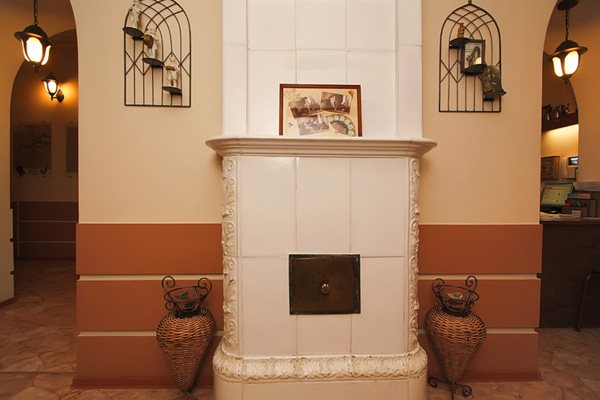

Classic Dutch stove decorated with ceramics and stucco.
The classic, original Dutch stove operates according to one simple principle: flue gases, passing an artificially elongated path, cool down more completely, giving off the heat of the stove itself. There are no physicochemical or thermodynamic nuances here. The original Dutch women were heating stoves in living quarters, and food was cooked on fires or hearths.
This specificity developed in the harsh Dutch Middle Ages for many reasons.
1. Holland has always been a small country. The local arable fields - polders - are the result of a continuous struggle with the sea. A house was being built on the reclaimed piece of land, in which it was necessary to mount a stove. As a result, the first simple, compact and plastic structures were laid out inside the housing.
2. The local climate is far from sugar. Formed by the Gulf Stream, it remains very uneven in winter: plus thaws can unexpectedly turn into severe frosts. Therefore, people needed stoves that could glow quickly with a minimum of fuel. Gradually, a great relationship emerged, where an impressive curving inner surface is combined with a small amount of material used during the construction. At the same time, there is a quick warming up and good heat capacity.
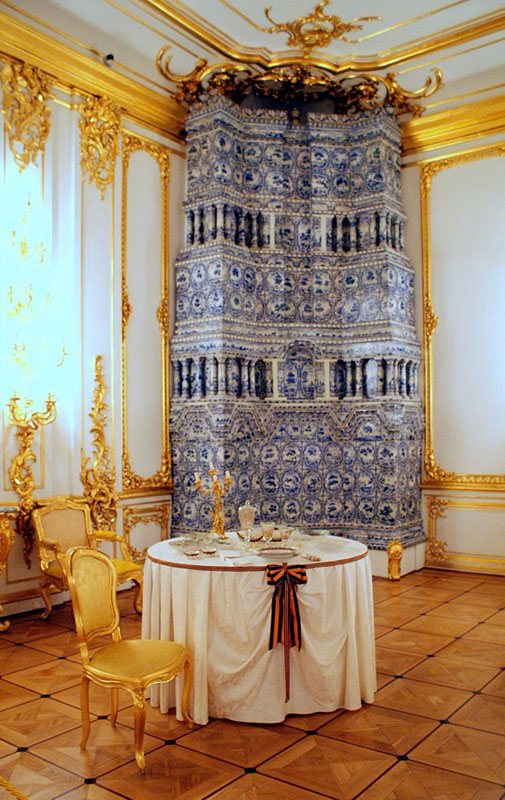

Dutch oven with tiles
3. In those days, homeowners had to pay property taxes "on smoke" (chimneys). Therefore, the furnaces were equipped with side smoke outlets. As a result, several furnaces were brought out into one tube. To prevent more powerful stoves from “squeezing out” the weaker ones, the labyrinth of chimney channels became more complicated, which excluded the possibility of smoke pollution in the premises.
4. Initially, urban Dutch construction was narrow and tall. For Holland of the XIV-XV centuries, buildings of 5-6 floors are not uncommon. Since there were no concrete floors, the furnace could not be massive. It was then that box-shaped honeycomb options appeared in Dutch ovens, strength was combined with relatively low material consumption.
In the starting Dutch women there were deaf furnaces. However, in the future, the Dutch began to equip the stoves with a blower with a door and a grate, and the arch of the firebox became arched. The Netherlands has never experienced problems with high-quality coal fuel (French and German northern deposits are located nearby).
The classic old Dutch ovens require special attention. Today, such buildings are the most valuable antiques. Once refurbished, they can be more expensive than the buildings in which they are located.
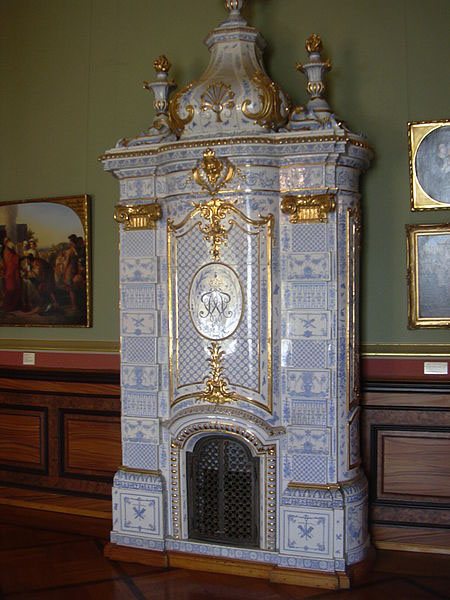

Dutch oven in the interior of the Philippsruhe castle in Hesse, Germany.
Curiously, in Russia, the term "Dutch woman" came to be understood not as traditional Dutch stoves, but any modernized heating devices with tiles.
Cons and pros
The main disadvantages of heating with a Dutch stove:
- require a lot of space in the room;
- the rate of heat transfer from air is less than that of water, and therefore more is needed;
- there are problems with the distribution of heated air in the rooms;
Is a very expensive pleasure.
It is important to note that heating stoves are much more difficult to maintain than steam heating, for which you just need to perform correct debugging, after which you just need to control the correct functioning of the system. During the use of the stove, it is necessary to constantly take care of the fuel and take care of the structure, as well as the room in which it is located must be periodically cleaned, since it quickly becomes dirty.It is important to note that the stove takes up quite a lot of space, so it is necessary to find a suitable place for it, and also you need to constantly look after it and check its correct functioning, since without these works, a fire may occur or carbon monoxide poisoning may occur. However, despite all the above disadvantages of stoves, they have high efficiency, quickly heat up rooms, are cheap to install and operate, and are also multifunctional, since they can be used to cook food that has a pleasant and unusual taste and rich aroma.
| Dutchwoman (02) 0.75m per 1m Heating. 3 kW. |
Place for the oven
Before directly installing the structure, it is important to determine the location of the furnace, since this issue is considered extremely important and relevant. Many people think that the best solution is to place the structure in the middle of the room, and in this case the smoke ducts should be laid along the wall, thus reducing the headroom and improving draft. However, this arrangement creates a constant circulation of air, in which it cools near the outer walls and returns to the furnace, forming a furnace draft. Cold air above the floor, which moves from the walls to the stove, creates discomfort for people who live or are simply in the room, so you cannot achieve good health in this way.
Therefore, the best solution is to locate the Dutch woman near the outer walls, however, in this case, there are certain disadvantages. A problem arises with smoke channels, since condensation appears on the inner walls and draft deteriorates, so the room will get dirty very quickly.
The compromise and the most optimal option is the location of the stove in the middle of the house, and the surfaces that give off heat should go into the living rooms, and parts that are heavily contaminated, such as the firebox and stove, should be in the kitchen.
This stove is well suited for giving
Video - Oven Dutch
Arrangement of the foundation
Despite the relatively small weight for a brick oven, the Dutch woman still needs a high-quality and reliable base. A great option is a monolithic slab. An important nuance: the foundation must be reinforced both in area and in volume, i.e. deep into. The dimensions of such a base must be at least 1.2x1.2 m. The foundation of the Dutch woman cannot be associated with the base of the main building.
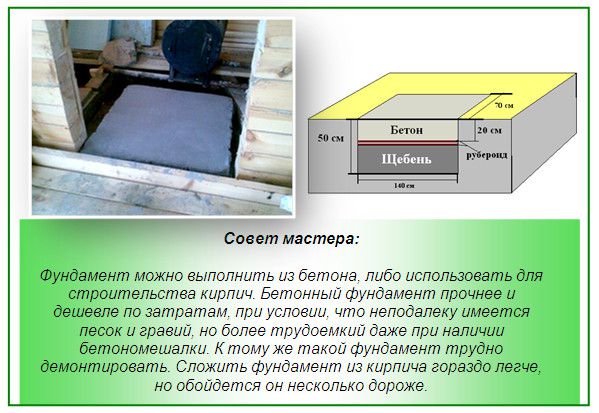

How to make a foundation
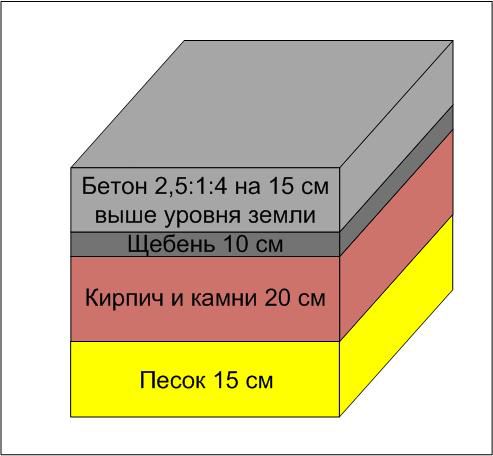

The foundation for a brick oven
The procedure for arranging the foundation is as follows.
First step. We outline the boundaries of the equipped base.
Second step. We dig a foundation pit about 60 cm deep.
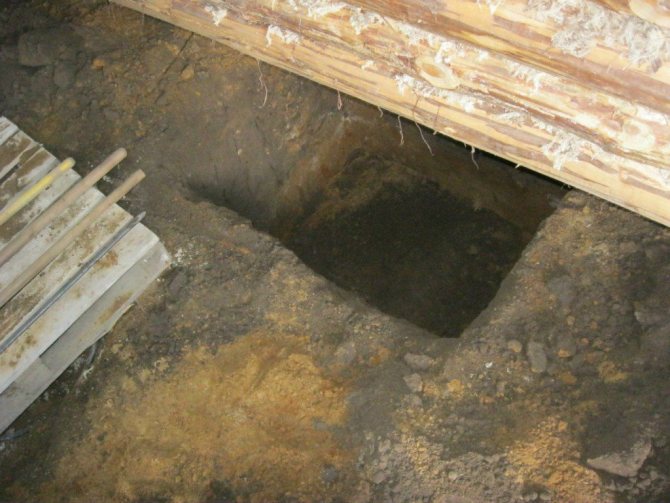

Foundation pit
Step three. We fill the bottom of the pit with a 15-centimeter layer of gravel. Carefully level and tamp the backfill.
Crushed stone
Fourth step. We lay a mesh of reinforcing bars. The recommended mesh size for such a grid is 100-120 mm.
Foundation pit with formwork and reinforcement
Fifth step. We install vertical reinforcement at the intersection of the bars. We tie all the joints of the elements of the support system with wire.
Sixth step. We install the formwork for pouring the foundation. We cover each wall of the formwork with roofing material or process it with resin for waterproofing.
Seventh step. Pour concrete.
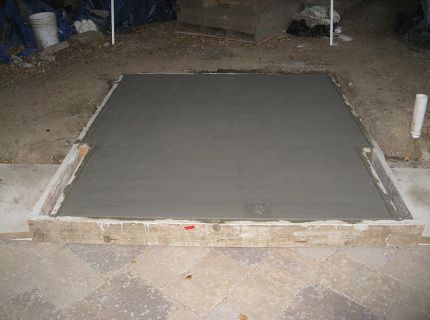

Poured concrete
Eighth step. We make "iron" the surface of the base. To do this, sprinkle the filling with a small amount of dry cement.
We give the foundation to gain strength. It is better to leave it for a month, but many craftsmen start laying in a week. At this point, the decision is yours.
Note
In accordance with the SNiP of 1991, stoves in log buildings are permissible only when the number of storeys of the building does not exceed two floors. Considering this, the temperature of the walls of the Dutch woman should be no more than 60 degrees.
These units are designed to heat, as a rule, one or two rooms. Their dimensions vary depending on the area to be heated. For example, for a room with an area of 20 m2, a stove with dimensions of 750 x 750 x 2000 mm is sufficient, provided that the house is well insulated. Such a stove, folded in the corner of a room, takes up very little space, and lined with ceramic tiles, and even with a glass furnace door, can become a real decoration of the interior. For two rooms, the heated surface of the oven is doubled. Such a stove is placed on the border of adjacent rooms, and in this case it makes sense to think about whether to make it a heating and cooking stove. These are the so-called "Swedes". Being multifunctional, they are ideal for summer residents who like to make blanks, dry mushrooms and berries, etc. Some ovens have two operating modes: summer and winter. Summer mode allows you to use the hob without heating the entire oven. This often helps with prolonged power outages. And now we get to the fun part. These combined fireplace stoves are universal heating devices that combine the practicality of stoves and the aesthetics of fireplaces. The inclusion of a fireplace in the design of the stove is almost always associated with the need to develop a project. The increased cross-section of the chimney pipe of the fireplace stove allows you to connect additional heating devices on the upper floor of the house (metal stoves and prefabricated fireplaces) to it.
